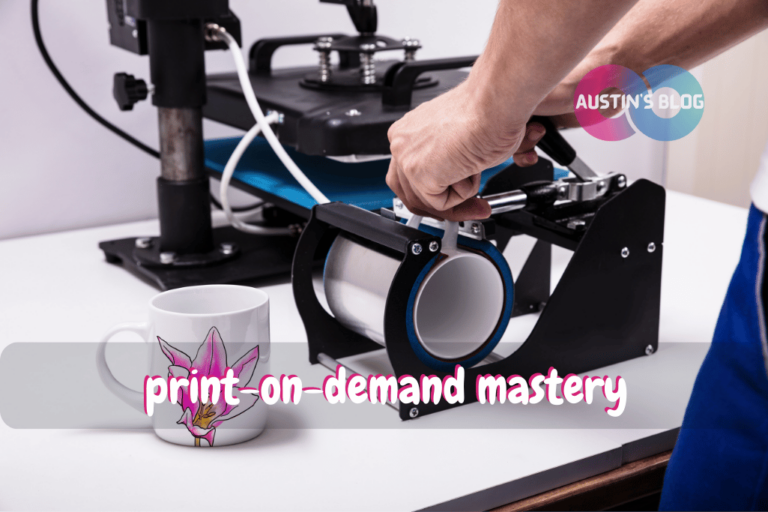Building an Emergency Fund as a Freelance Writer: Your Complete Guide
Introduction
Did you know that 63% of Americans couldn’t cover an unexpected $500 emergency without going into debt? [1]
For freelance writers dealing with variable income, this statistic becomes even more alarming.
I learned this lesson the hard way when I lost my biggest client unexpectedly and had no financial safety net.
That moment transformed how I approach financial security in my writing career.
In this comprehensive guide about building freelance writer emergency fund, I’ll share the following:-
Creating, funding, and maintaining an emergency fund specifically designed for the unique challenges freelance writers face.
We’ll cover realistic saving strategies, appropriate fund sizes, and how to use your emergency fund wisely when the need arises.
Why Freelance Writers Need a Larger Emergency Fund
Before diving into specific strategies, it’s important to understand why freelance writers require more substantial emergency funds than traditional employees.
The Unique Financial Vulnerabilities of Writers
Freelance writing comes with specific financial challenges that make emergency funds even more crucial:
Irregular income: Unlike salaried employees, writers experience significant month-to-month income fluctuations.
I’ve had months where I earned three times my average followed by months with barely any income at all.
Client concentration risk: Many writers rely heavily on a few major clients.
When I lost a client that represented 40% of my income, it created an immediate financial crisis that took months to recover from.
Delayed payment cycles: Even when work is steady, payment timing is often unpredictable. I’ve waited up to 90 days for payment from some publications, creating serious cash flow gaps.
No employer benefits: Without employer-provided health insurance, paid time off, or disability coverage, any illness or personal emergency directly impacts both your income and expenses simultaneously.
Project-based workflow: Writing work often comes in projects rather than steady ongoing assignments, creating natural gaps between income sources.
These factors combine to create a much more volatile financial situation than traditional employment, requiring a more robust financial safety net.
Emergency Fund vs. Cash Flow Buffer: Understanding the Difference
Many writers confuse general cash flow management with true emergency funds. They serve different purposes:
Cash flow buffer: This is money set aside to handle the normal ebb and flow of freelance income – covering expenses during slow periods or while waiting for client payments.
Think of this as managing expected variability.
Emergency fund: This is a separate reserve specifically for unexpected major disruptions – serious illness, significant client loss, family emergencies, or major unexpected expenses.
It’s designed to sustain you through genuine crises, not routine income fluctuations.
I maintain both types of reserves: a smaller cash flow buffer in my business checking account for normal income variations, and a dedicated emergency fund in a separate high-yield savings account that I touch only for genuine emergencies.
Determining Your Ideal Emergency Fund Size
Financial advisors typically recommend 3-6 months of expenses for traditional employees’ emergency funds. For freelance writers, this baseline needs adjustment.
The 6-12 Month Guideline for Freelancers
Most financial experts suggest freelancers need at least 6-12 months of essential expenses saved, given the higher income volatility and lack of employer benefits. This extended timeline provides:
- Sufficient runway to find new clients if you lose major income sources
- Coverage for healthcare costs during illness without employer sick leave
- Buffer against industry downturns or seasonal slow periods
- Financial security during personal emergencies when you can’t work
When calculating your target, focus on essential expenses only:
- Housing (rent/mortgage)
- Utilities
- Groceries
- Healthcare
- Essential transportation
- Minimum debt payments
- Basic business expenses necessary to maintain operations
For me, this calculation revealed I needed approximately $4,000 monthly to cover true essentials, making my target emergency fund between $24,000-$48,000.
That number seemed impossible when I started, but breaking it into smaller goals made it achievable.
Customizing Your Fund Size Based on Personal Risk Factors
Your ideal emergency fund might need to be larger or smaller based on specific risk factors:
Health considerations: If you have chronic health conditions or family members with medical needs, aim for the higher end of the range.
Specialized niche: Writers in highly specialized fields might need longer to find new clients, warranting a larger fund.
Income consistency: If you already have several steady retainer clients or diversified income streams, you might manage with a somewhat smaller fund.
Family situation: Single-income households generally need larger emergency reserves than dual-income situations where a partner has stable employment.
Debt obligations: Higher debt levels increase your fixed monthly expenses, potentially requiring a larger emergency fund.
Analyze your specific situation and adjust your target accordingly.
I added two additional months to my target because I specialize in a technical niche that typically has longer sales cycles for new client acquisition.
Realistic Strategies for Building Your Fund
Building an emergency fund with variable income requires strategic approaches tailored to the freelance lifestyle.
Starting Small: The Psychology of Achievable Goals
When I first calculated my full emergency fund target, I felt overwhelmed and demotivated. The solution was breaking it down into more manageable phases:
Phase 1: $1,000 starter emergency fund (approximately 1-2 weeks of expenses)
Phase 2: One month of essential expenses
Phase 3: Three months of essential expenses
Phase 4: Six months of essential expenses
Phase 5: Full target amount (9-12 months for most writers)
Celebrating each milestone provides psychological motivation to continue building. I threw a small personal celebration for each phase I completed, reinforcing the achievement.
Percentage-Based Saving Methods for Variable Income
Traditional “save $X per month” approaches often fail for freelancers with fluctuating income. Instead, use percentage-based methods:
The 10% method: Immediately set aside 10% of every payment you receive for your emergency fund, regardless of the amount. This approach adjusts automatically to income fluctuations.
The high/low method: Set aside 5% of income during average or low-income months, but increase to 20-25% during high-income months or windfall payments.
The “pay yourself first” strategy: Before allocating income to any other category, transfer your emergency fund contribution, treating it as a non-negotiable expense.
I use a combination approach: 10% of all standard payments plus 25% of any “windfall” payments that exceed my monthly average income. This accelerated my progress without making regular months too tight financially.
Leveraging “Found Money” and Extra Income
Supplement your regular saving strategy with these additional funding sources:
Tax refunds: Direct all or a significant portion to your emergency fund.
Client bonuses or rush fees: When you charge premium rates for expedited work, allocate the difference to your emergency fund.
Side projects or passive income: Designate specific income streams exclusively for emergency fund building.
Expense reductions: Review your budget for potential cuts, directing the saved amount to your emergency fund.
When I received an unexpected kill fee for a canceled project, I resisted the temptation to treat it as a windfall and instead transferred the entire amount to my emergency fund.
These one-time boosts significantly accelerated my progress.
Automating Contributions for Consistency
Automation helps overcome the psychological barriers to consistent saving:
- Set up a separate high-yield savings account specifically for your emergency fund
- Create automatic transfers from your business account on specific days
- Use apps like Digit or Chime that automatically detect “safe to save” amounts based on your cash flow
For irregular income, consider weekly micro-transfers rather than larger monthly ones.
I set up automatic weekly transfers of $50, supplemented by manual transfers during higher-income periods.
The consistency of these small automatic transfers created a foundation that larger manual transfers built upon.
Where to Keep Your Emergency Fund
The location of your emergency fund affects both its accessibility and growth potential.
High-Yield Savings Accounts: The Foundation
High-yield online savings accounts provide the best balance of safety, accessibility, and modest returns for your primary emergency fund:
Pros:
- FDIC insurance protects your principal
- Higher interest rates than traditional banks
- Easy access during genuine emergencies
- No market risk or volatility
Cons:
- Returns typically don’t keep pace with inflation long-term
- May take 1-2 business days to transfer funds to checking
I keep approximately 75% of my emergency fund in a high-yield online savings account, earning interest while maintaining ready accessibility.
Laddered CDs for Portion of Larger Funds
For larger emergency funds, consider keeping a portion in a CD ladder to earn higher interest rates:
How it works:
- Divide part of your fund into equal portions
- Open CDs with staggered maturity dates (3-month, 6-month, 9-month, 12-month)
- As each CD matures, reinvest in another 12-month CD
- Eventually all CDs are 12-month terms but one matures every three months
This approach increases your return while maintaining quarterly access to portions of your fund if needed.
I keep about 25% of my emergency fund in a simple CD ladder, boosting my overall return while maintaining sufficient liquidity.
Conservative Investment Options for Partial Allocation
Once your emergency fund exceeds six months of expenses, consider investing a small portion (no more than 20-30%) in more growth-oriented but still relatively conservative options:
Short-term bond funds: Typically more stable than stocks but with better returns than savings accounts
Treasury Inflation-Protected Securities (TIPS): Government bonds that adjust with inflation
Balanced funds: Diversified funds with a conservative mix of stocks and bonds
These options potentially provide better long-term growth for a portion of your fund but come with some market risk.
Keep most of your emergency fund in guaranteed accounts regardless of your investment experience.
Using Your Emergency Fund Appropriately
Building an emergency fund is only half the equation—knowing when and how to use it is equally important.
What Constitutes a True Emergency for Writers
Be clear about what qualifies as an appropriate use of emergency funds:
Genuine emergencies:
- Major health issues preventing you from working
- Significant loss of clients representing substantial income
- Essential major home or car repairs
- Family emergencies requiring time away from work
- Industry downturns affecting multiple clients simultaneously
Not emergencies:
- Normal income fluctuations
- Expected seasonal slow periods
- Planned major expenses
- Business investments or growth opportunities
- Temporary cash flow delays
I created a written list of criteria that must be met before I tap my emergency fund, which helps me make objective decisions rather than emotional ones in the moment.
The Replenishment Plan: Before You Withdraw
Before using your emergency fund, create a specific replenishment strategy:
- Determine how much you need to withdraw (take only what’s essential)
- Create a realistic timeline for rebuilding the fund
- Identify specific actions to accelerate replenishment
- Document the plan before accessing the money
This pre-withdrawal planning creates accountability and ensures that your emergency fund will be restored for future needs.
Tracking Emergency Fund Use for Business Insights
Each time you need to access your emergency fund, document:
- The nature of the emergency
- Amount withdrawn
- Duration of the financial impact
- Steps taken to address the root cause
This documentation helps identify patterns that might indicate underlying business issues requiring attention.
After analyzing my own emergency fund usage, I realized I was particularly vulnerable to healthcare costs and adjusted my health insurance coverage accordingly.
Beyond the Emergency Fund: Creating Multiple Financial Safety Nets
A comprehensive financial safety net extends beyond just your emergency fund.
Income Diversification as Risk Management
Reducing reliance on any single income source significantly decreases emergency fund usage:
Client diversification: Aim for no single client representing more than 25-30% of your income.
Industry diversification: Work with clients across different sectors to reduce impact from industry-specific downturns.
Service diversification: Offer complementary services beyond writing (editing, consultation, training).
Passive income development: Create digital products, courses, or other assets that generate revenue without direct time investment.
Since implementing this diversification strategy, I’ve reduced my largest client’s share of my income from 40% to under 25%, significantly decreasing my vulnerability to client loss.
Insurance Coverage as Financial Protection
Strategic insurance coverage prevents many potential emergencies from depleting your fund:
Health insurance: Comprehensive coverage with manageable out-of-pocket maximums protects against catastrophic medical expenses.
Disability insurance: Provides income replacement if you’re unable to work due to illness or injury.
Business insurance: Protects against liability claims and business interruption.
Equipment insurance: Covers replacement of essential work tools like computers and specialized equipment.
After a laptop failure nearly derailed my business, I added equipment insurance with a rider specifically covering my computer and related equipment. The premium is minimal compared to the potential emergency fund withdrawal I’d need for immediate replacement.
Creating Income Stream Redundancy
Develop backup income sources that can be activated quickly during emergencies:
Warm client relationships: Maintain connections with previous clients who might provide work on short notice.
Easy-activation income: Identify tasks you can quickly pick up during emergencies (editing, content review, etc.).
Skill-based fallbacks: Maintain secondary marketable skills that could generate income during disruptions to your writing business.
I maintain relationships with three former regular clients through occasional small projects and check-ins, creating potential immediate income sources if needed during emergencies.
Maintaining Your Emergency Fund Long-Term
Once you’ve built your emergency fund, proper maintenance ensures it remains effective protection.
Regular Review and Adjustment
Your emergency fund needs change as your business and personal life evolve:
Quarterly reviews: Assess whether your current fund size still matches your needs and risk profile.
Annual adjustment for inflation: Increase your target amount to maintain purchasing power over time.
Life change reassessment: Major changes (new dependents, health conditions, business evolution) may require adjustment to your fund size.
I schedule calendar reminders for quarterly emergency fund reviews alongside my regular business planning, ensuring this crucial financial component receives consistent attention.
Balancing Emergency Funds with Other Financial Goals
As your emergency fund grows, you’ll need to balance it with other financial priorities:
Sequential priority approach: Fully fund your emergency savings before focusing on less essential financial goals.
Parallel progress method: Once you reach 3-4 months of expenses, split your savings between emergency fund growth and other goals.
Threshold strategy: Set a minimum acceptable emergency fund level, then direct additional savings toward other goals until that minimum is threatened.
I use a modified threshold approach, maintaining six months of expenses as my non-negotiable minimum while directing additional savings to retirement and business growth once that level is secured.
Psychological Aspects of Fund Maintenance
Maintaining an emergency fund requires ongoing psychological discipline:
Visual reminders: Keep a visual representation of your emergency fund goal and progress where you’ll see it regularly.
Emergency fund “rules” document: Create written guidelines for fund use to reference during emotionally charged situations.
Positive reinforcement: Celebrate maintaining your fund through challenging periods as a success, not just building it initially.
I keep a simple progress thermometer on my desk showing my current emergency fund status, serving as a daily reminder of both the security it provides and my commitment to maintaining it.
Success Stories and Lessons Learned
Let me share both my own experiences and those of other writers I’ve worked with to illustrate these principles in action.
Real-World Examples of Writer Emergency Fund Success
Case Study 1: Healthcare Emergency A colleague experienced a sudden health crisis requiring six weeks away from writing.
Her eight-month emergency fund covered living expenses and medical costs not covered by insurance, allowing full recovery without financial stress.
Upon return, she implemented a monthly “health security” allocation to rapidly rebuild her depleted fund.
Case Study 2: Major Client Loss When I lost my largest client representing 40% of my income, my emergency fund covered three months of reduced income while I focused intensively on business development.
Without this buffer, I would have been forced to take on any available work, regardless of fit or future potential.
Case Study 3: Industry Downturn During an economic downturn affecting multiple clients simultaneously, another writer’s emergency fund provided 10 months of sustainability.
This allowed him to maintain his specialized niche rather than abandoning it for more immediately available but less desirable work.
Common Mistakes and How to Avoid Them
Learn from these frequent emergency fund missteps:
Mistake 1: Underestimating necessary fund size Solution: Calculate your actual essential expenses rather than using generic formulas, then add 10-15% buffer for unexpected costs.
Mistake 2: Using emergency funds for business investments Solution: Create a separate opportunity fund specifically for business growth and investments.
Mistake 3: Failing to replenish after use Solution: Implement automatic rebuilding through percentage-based contributions after any withdrawal.
Mistake 4: Not adjusting for significant life or business changes Solution: Schedule biannual reviews of your emergency fund target amount, especially after major life events.
I made the mistake of dipping into my emergency fund for a “can’t-miss” business opportunity that ultimately underperformed.
This taught me the importance of maintaining separate funds for true emergencies versus business opportunities.
Conclusion
Building an emergency fund as a freelance writer isn’t just financial planning—it’s creating the foundation for creative freedom and professional sustainability.
With adequate financial protection, you can:
- Take on more interesting but potentially riskier projects
- Weather industry changes without panic decisions
- Maintain your rates rather than discounting out of desperation
- Prioritize health and personal wellbeing when needed
- Make business decisions from a position of security rather than fear
Start where you are—even a small initial emergency fund provides some protection.
Then build systematically using the percentage-based methods and milestone approach outlined in this guide.
Your future self will thank you for the security and peace of mind that comes from knowing you have a financial buffer against life’s inevitable surprises.
What strategies have you found most effective for building your emergency fund as a writer? Share your experiences in the comments below!
Frequently Asked Questions: Freelance Writer Emergency Fund
Q: What is an emergency fund, and why is it important for freelance writers?
A: An emergency fund is a financial safety net that freelance writers can rely on during unexpected situations such as illness, loss of clients, or a sudden drop in income.
It is crucial for freelance writers because it provides financial stability and peace of mind, allowing them to focus on their writing projects without the constant worry of financial insecurity.
Q: How much should freelance writers aim to save in their emergency fund?
A: Freelance writers should aim to save at least three to six months’ worth of living expenses in their emergency fund.
This amount can vary depending on individual circumstances, such as the stability of their freelance writing services and personal financial obligations.
It is important to assess one’s financial situation and set a realistic savings goal.
Q: How can freelance writers start building their emergency fund?
A: Freelance writers can start building their emergency fund by setting aside a portion of their income from each writing project.
It is advisable to create a separate savings account specifically for this purpose.
Consistent contributions, even if small, can accumulate over time and provide a substantial financial cushion.
Q: What strategies can freelance writers use to manage their finances effectively?
A: Freelance writers can manage their finances effectively by budgeting their income, tracking expenses, and setting financial goals.
It is also beneficial to understand how freelance writers price their services and to regularly review and adjust rates to reflect their experience and market demand.
Joining organizations like the Society of Journalists and Authors can provide additional resources and support.
Q: How do freelance writer charges impact their ability to build an emergency fund?
A: Freelance writer charges directly impact their income and, consequently, their ability to build an emergency fund.
By ensuring that their rates are competitive and reflective of their skills and experience, writers can increase their earnings and allocate more funds towards their emergency savings.
Q: Are there any resources available for freelance writers facing financial difficulties?
A: Yes, there are several resources available for freelance writers facing financial difficulties. Organizations such as the American Society of Journalists and Authors and the Royal Literary Fund offer emergency assistance and grants.
These resources are designed to help support authors impacted financially and provide an emergency resource for Canadian writers and those based in the US.
Q: What role do professional organizations play in supporting freelance writers?
A: Professional organizations play a significant role in supporting freelance writers by providing networking opportunities, advocacy, and financial assistance.
Membership in groups like the American Society of Journalists can offer access to emergency grants and resources that help writers with a substantial body of work during challenging times.
Q: How can beginner writers start preparing for financial emergencies?
A: Beginner writers can start preparing for financial emergencies by setting realistic financial goals, learning how to budget effectively, and gradually building their emergency fund.
It is also beneficial for them to seek advice from established freelance writers and consider joining organizations that offer resources for career writers with a substantial body of work.
Q: Can freelance writing businesses provide stability in building an emergency fund?
A: Yes, freelance writing businesses can provide stability in building an emergency fund by diversifying income streams and securing long-term contracts.
By offering a range of freelance writing services and maintaining a steady client base, writers can ensure a more consistent income, which aids in the growth of their emergency fund.






